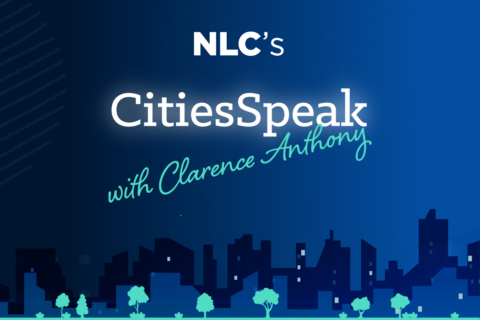The racial wealth divide stems from decades of systemic policies that have prevented Black, Indigenous and People of Color (BIPOC) from accessing the same wealth-building opportunities as their white counterparts. White families with greater household wealth are more likely to build financial security and accumulate wealth as it passes from generation to generation. Black individuals in particular are more likely to experience income volatility, moving up and down the economic ladder more frequently than white individuals. Significant drivers of income and wealth instability are longstanding disparities in wages and employment resulting from decades of inequitable policies, practices, and procedures such as unfair recruitment practices, disproportionate workplace discipline, lack of promotion opportunities, and discriminatory dismissal practices. For example, Lean In and McKinsey & Company’s annual 2020 Women in the Workplace study found that for every 100 white men promoted, only 58 Black women are promoted; and Black women are also severely underrepresented in top leadership positions.
Municipalities can promote economic stability and mobility by analyzing and addressing systemic racial disparities in their communities through inclusive workforce development. However, to promote more equitable wealth creation, workforce efforts must be intentional with analyzing and disaggregating workforce data and addressing historical municipal practices. This effort will help create pipelines for BIPOC to have access to employment that offers higher wages and career advancement opportunities needed for workers to build savings and accumulate assets.
Black, Indigenous, and Latinae/Hispanic households fare worse than white households in just about every measure of income and employment. The income poverty rate in the U.S. for Black and Indigenous households is more than two times greater than that of white households, and 1.8 times greater for Latinae/Hispanic households. Black workers are more than twice as likely to be unemployed as their white counterparts, Indigenous workers 1.8 times more likely, and Latinae/Hispanic 1.5 times more likely. Disproportionate percentages of Black, Indigenous, and Latinae/Hispanic workers hold low wage occupations that are vulnerable to job insecurity due to the rise of automation.
AAPI Data highlights the Department of Labor’s 2016 report on labor force characteristics by race and ethnicity that while AAPIs as a whole have very low unemployment rates, the AAPI community has the second highest share of unemployed workers who are long-term unemployed (30.2 percent), trailing only the Black non-Hispanic community (34.7 percent). The Vietnamese community has the highest share of long-term unemployed workers (41.5 percent). Of all the AAPI subgroups, only Japanese (22.8 percent) and Native Hawaiians and other Pacific Islanders (16.5 percent) have a notably lower share of long term unemployed than both white non-Hispanics (26.2 percent) and Hispanics (25.2 percent).
Municipalities across the country are tackling employment-related inequities through creative workforce development programs. In Redwood City, CA, city officials are starting early by engaging youth to better understand their needs and employment prospects. With support from Get Healthy San Mateo County and the Community Collaborative for Children’s Success, Redwood City is conducting a landscape analysis to identify existing supports and needs to get a jump start on workforce development, starting with residents as young as 16. Redwood City’s landscape analysis conducted intentional outreach to Latinae/Hispanic and Black youth and the city hosted a College, Career and Community Fair that drew more than 300 local youth to begin to understand the needs of its up-and-coming labor force.
Many cities are responding to occupational segregation by investing in training for in-demand sectors and apprenticeship opportunities aimed at BIPOC participants. The U.S. is entering what has been called a build-and-make decade, with growing infrastructure needs across industries such as energy, water, transportation and beyond. The City of New Orleans, LA, is growing jobs in the “green” industry while engaging BIPOC residents by partnering with Thrive New Orleans. Thrive is the city’s Natural Disaster Resilience operator, providing job training in fields such as stormwater management, environmental stewardship, landscaping and construction. Thrive serves as the prime contractor on numerous projects and works closely with other small businesses, providing an on-ramp for participants to enter the workforce and obtain sustainable employment with a livable wage.
City governments can also collaborate with anchor institutions that have expertise in providing career training. Local community colleges are essential partners in preparing adult learners to enter the workforce or changing careers to build skills in various fields. San Antonio, TX, partners with their local community college system, Alamo Colleges, to provide field specific training to help employees upskill to move up the career ladder. San Antonio’s Ready to Work program offers training, education and employment support; and specifically targets the city’s majority minority population, many of whom were impacted in the wake of job loss following the COVID-19 pandemic. Alamo Colleges conducts intake and eligibility assessments for potential participants and offers training courses in up-and-coming fields such as healthcare and manufacturing.
Municipal workforce development programs vary greatly and can have far-reaching implications for narrowing the racial wealth gap. Municipalities should begin by assessing racial disparities in income and employment, examining the needs of those most impacted, and reviewing internal policies, practices, and procedures to ensure they create an inclusive workforce. Implementing programs that boost skill attainment, focus on disinvested regions, and create job pipelines that intentionally advance economic mobility for BIPOC residents can reduce racial inequities while driving local economic growth overall.
Learn More
Join us from 2 p.m. to 3 p.m. (ET) on Thursday, January 11, for a webinar on Cities Narrowing the Racial Wealth Divide Through Workforce Development. Stay tuned for more from NLC’s strategy series on how cities can narrow the racial wealth divide by addressing disparities in income, savings, and debt faced by communities of color; and engaging methods to increase BIPOC homeownership.









